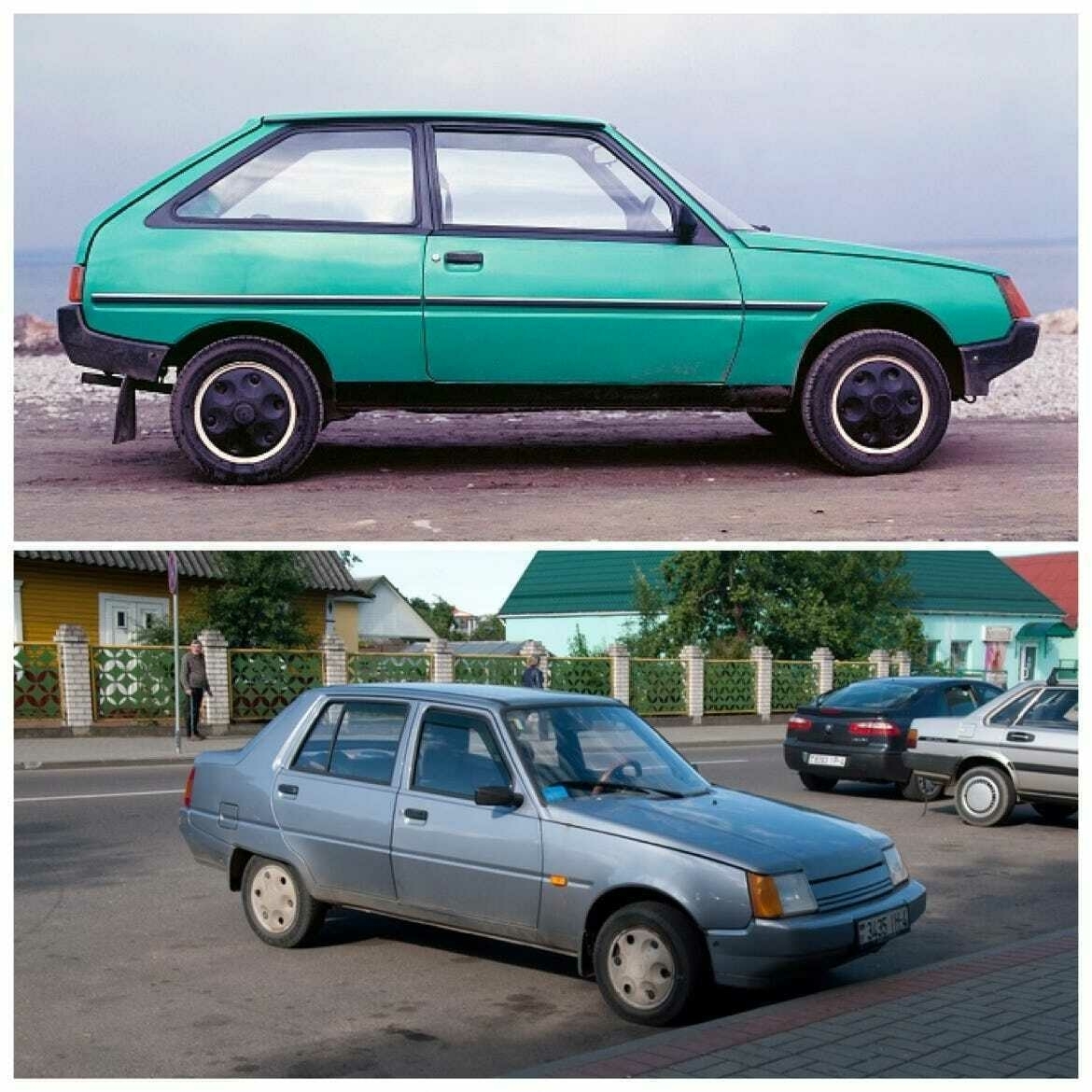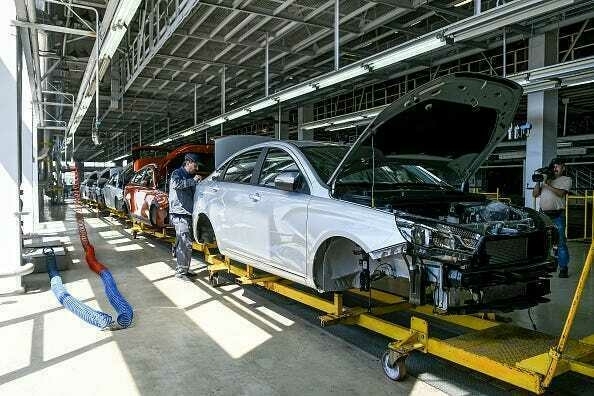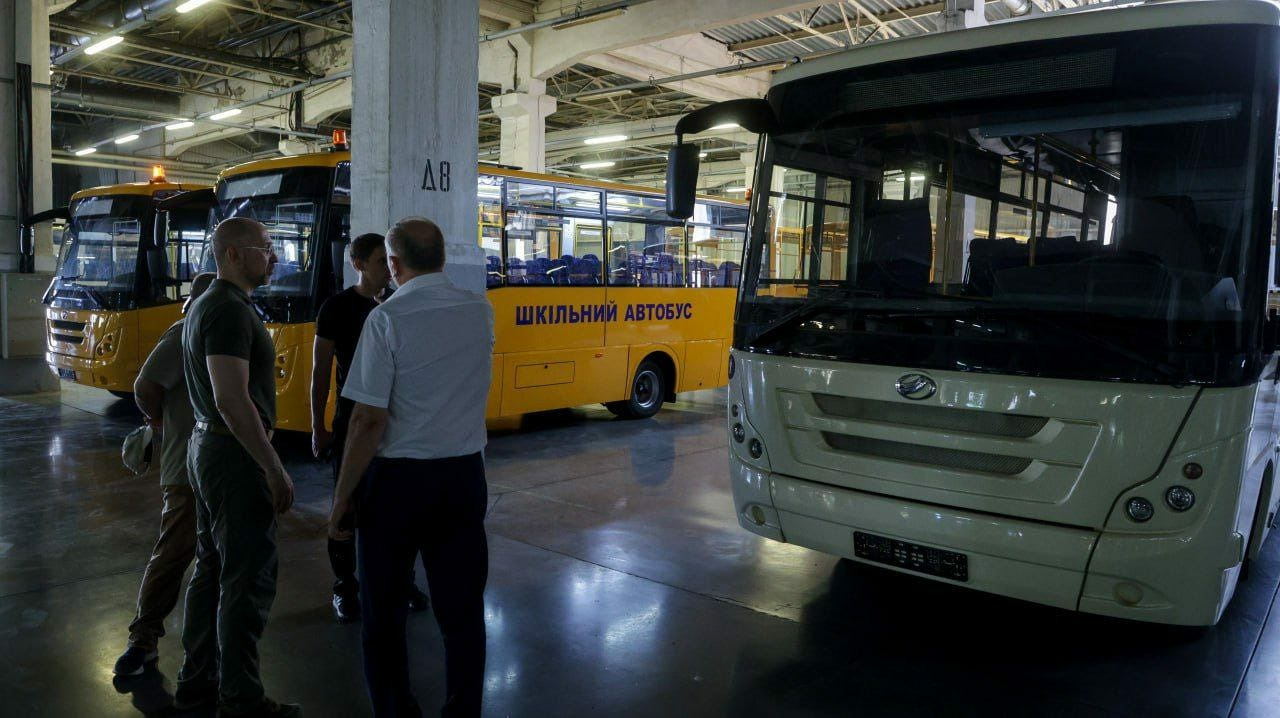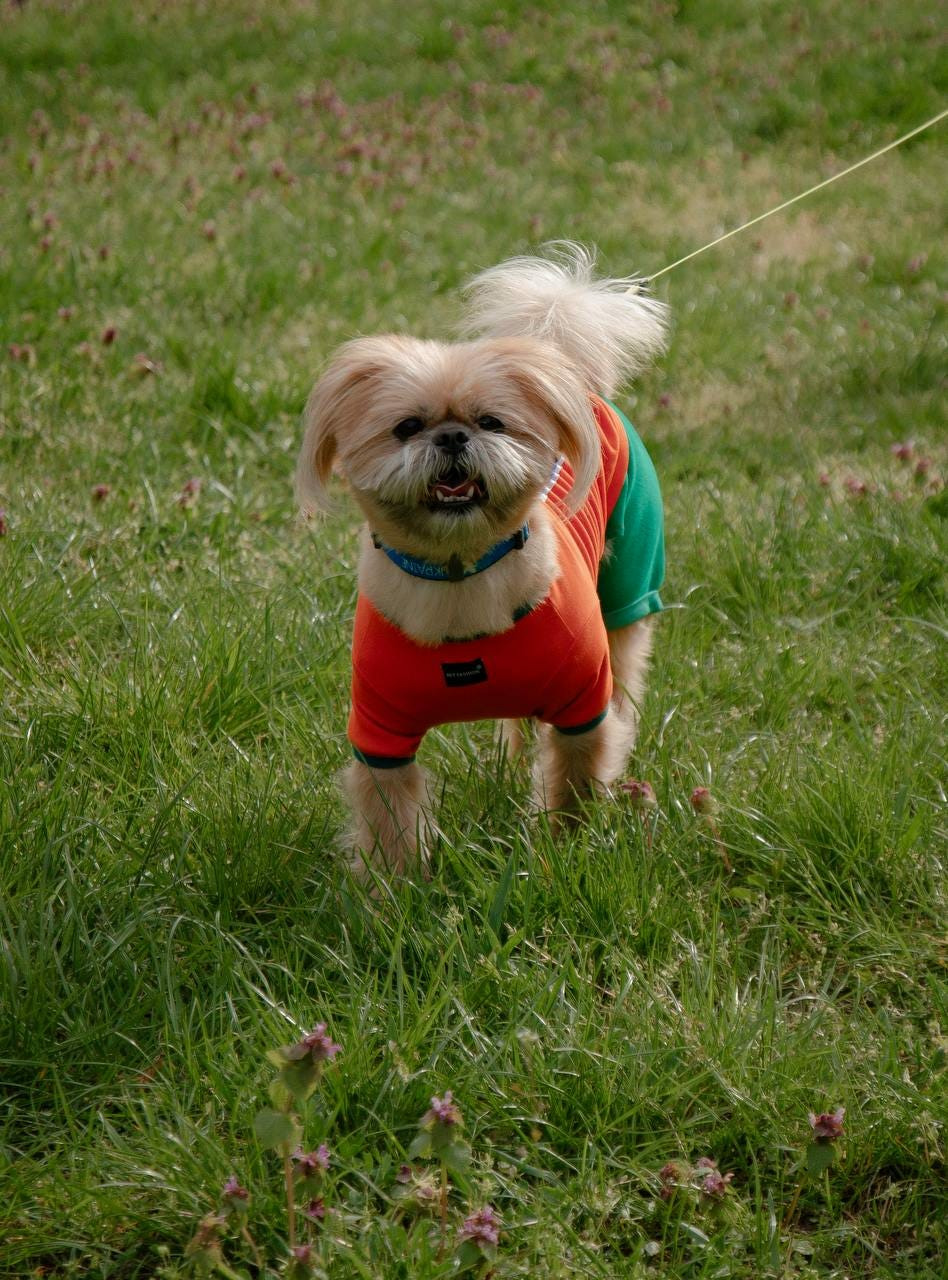Editor’s Note:
We turn two years old in just over one week.
Will you support our ongoing subscription drive by upgrading?
We look past the headlines to tell powerful, human stories from the heart of the war. Support journalism that digs deeper and helps you truly understand the lives of free people.
Yurii Pelykh has been building Ukrainian cars all his life, believing that one day they could compete with foreign cars.
However, when the government imposed import duties to protect domestic manufacturers, his hopes were dashed. The workshops gradually closed, his salary decreased, and the job he loved became defunct.
After more than 20 years at the plant, Yurii had to leave – not because he wanted to, but because there was nothing left to stay for.
In the early 1990s, Ukraine imposed high tariffs on imported cars to protect domestic producers. However, rather than fostering a thriving auto industry, the country faced stagnation. Ultimately, Ukrainians were forced to pay inflated prices for imported cars [Editor’s note: The Counteroffensive’s evacuation car in Kyiv is an almost two decades-old Mitsubishi].
A similar economic model is now being implemented in the United States. The Trump administration has raised tariffs on foreign cars to 25 percent to curb the foreign competition. Ukraine's experience should serve as a warning. In an era of global competition, protecting domestic producers by taxing imports can backfire, leading to stagnation and higher consumer prices everywhere.
"This will not end well. I think the whole world is in crisis: China has already retaliated with 125% tariffs [on the U.S.] and will not lift them," Yurii told The Counteroffensive.
Yurii Pelykh, 52, joined the Zaporizhzhia Automobile Building Plant, a legend of the Ukrainian automobile industry, as a process engineer in 1995, immediately after graduating from university. At that time, the plant produced just two cars: the Tavria and the Slavuta.
They were cheap and easy to repair. The Tavria, named after the historical name of the Crimean peninsula, was a hatchback; and the Slavuta, whose name comes from the Slavuta River, which is the ancient name of the Southern Bug River in southwestern Ukraine, was an extended version with a sedan body.
For many Ukrainians, these cars became their first personal vehicles in independent Ukraine.

After the collapse of the USSR, the plant started to decline: first because of the economic crisis of the early 1990s and then because of the influx of foreign cars. To support domestic producers, Ukraine introduced a 25 percent tariff on imported cars in 1991. ZAZ itself lobbied for the idea of import duties.
"I think it initially protected our domestic market. Thanks to these tariffs, there was a great demand for our cars," Yurii said.
Working at the plant was challenging yet very interesting. Initially, cars were produced in sufficient quantities; Yurii was promoted, and his salary increased, along with those of many colleagues. His standard of living improved, especially since Ukrainian cars at that time were of high quality and people wanted to buy them.
"It was very interesting to work... I was proud of our production, of the plant. My work opened up new opportunities," Yurii said.
However, this import policy did not prove to be a long-term solution, said Veronika Movchan, the head of the Center for Economic Research.
According to Veronika, in addition to the economic crisis of the 1990s, which made it harder for people to buy things, the lack of competitive Ukrainian cars was significant. Domestic manufacturers struggled to deliver the necessary quality and technological standards to compete with foreign brands.
"The introduction of these duties could have given us a real opportunity to rebuild and start working in a new way. However, we also needed to invest in the development of the industry. But this was never done in Ukraine," Oleksandr Strohanov, former director of the Lviv Bus Plant, told The Counteroffensive.
As a result, even after introducing protective tariffs, the Ukrainian automotive industry could not regain its position in the market. As Ukraine began to increase imports of safer and more efficient foreign cars, people began to find the Ukrainian Tavria and Slavuta expensive and outdated.
"To compete, we need to develop. We had developed production to a certain level, but new models had to appear. This is what always happens in the car market. We developed a successful model, but it has to be modernized after three years. For us, nothing changed," Yurii said.
Even Yurii himself decided not to buy a ZAZ car. He says he was saving for an apartment, but even after he bought it, he never purchased a Ukrainian car.

2007, the last year before the global economic crisis, was the best year for ZAZ. At that time, the plant produced the largest number of cars in one year — more than 280,000. But after that, Yurii said, the situation became more complicated every year.
By 2016, ZAZ only produced 500 cars.
It was a real shock for Yurii. He loved his job at the factory, but conditions were deteriorating. Yurii states that his colleagues were eager to work and develop new cars, but at that moment, there was insufficient funding for such initiatives.
"It was painful... I had to lay off people. I had 20 people working and I had to dismiss 5. It was unpleasant and difficult. Things got sadder and sadder," Yurii said.
Before Russia’s 2014 invasion, the plant produced cars for Ukraine’s domestic market and for export, mainly to countries in the former Soviet Union, particularly Russia. After the war began, cooperation with Moscow was suspended.
"There was no alternative. Europe did not accept us. Because there are certain standards there, including toxicity standards [which Ukraine did not meet]," Yurii said.
Yurii felt the impact of the tariffs on the plant. As the Ukrainian automotive industry did not create new development opportunities, the plant eventually could not pay Yurii because it lacked sufficient funds.
He was not fired but demoted from his management position. In addition to the fact that his standard of living dropped due to a decrease in his salary, it was also a decrease in his status.
"A step back, not forward," Yurii said.
Finally, in 2017, Yurii could no longer tolerate the situation and quit to seek a better job. Although he once took pride in his work and earned a good salary, by the end of his career, he had neither. Now, he makes car mufflers at another factory, which are shipped to Europe.
"The plant used to work around the clock. And what happened later was no longer work[ing].... So I wanted to prove to myself that I could do more and better," Yurii said.
In 2025, the United States imposed new tariffs on imported cars. Veronika Movchan and Serhii Sukhovskyi, editor-in-chief of the information and analytical group Autoconsulting, said the situation could be even worse for the United States than it was in Ukraine.
Ukrainian manufacturers lobbied for tariffs because of the domestic auto industry’s lack of competitiveness. But the American auto industry is very competitive. The United States has a strong domestic market and a developed auto industry. For decades, it has built global supply chains for efficiency and profit. Now, the Trump administration is effectively severing critical international ties.
"Cars will become much more expensive, which is bad for the U.S. For them, a car is a key element of life. Almost everyone drives to work. So if cars become more expensive, this is a critical issue for every family," Movchan said.
A recent study from the Center for Automotive Research estimates that the 25% auto tariffs introduced by President Donald Trump in early April will cost U.S. automakers around $108 billion in 2025.
Imposing tariffs on imported cars is popular among the public. Yet, Ukraine's bitter experience shows that everyone loses — both domestic producers and importers.
Yurii is convinced that the issue is approaching a catastrophe, leading him to believe that the United States should lift the tariffs currently in place.
In the best years, the Ukrainian car market had 623,000 new cars and was Europe's No. 7 car market, according to Autoconsulting. Today, it is almost zero. At present, there are 10 automobile factories in Ukraine. However, none produce their own cars: some assemble foreign cars, while most produce buses, school buses, trolleybuses, or trucks.

The chances of reviving Ukrainian car production are rather slim. According to Movchan, Ukraine's only hope is to start producing trucks for the army, which Ukraine needs now.
Yurii Pelykh fondly remembers his work at the Zaporizhzhya Automobile Building Plant.
Sometimes, he misses it, but he does not want to go back there because it is a stage of his life that has already passed.
In this time of great uncertainty — and unstable American support — it means that the situation on the ground is very dangerous. Your contributions help us get the body armor, medical gear, and supplies we need to stay safe.
Show your support by contributing to our tip jar - funds go towards keeping us safe and ensuring our work continues.
NEWS OF THE DAY:
Good morning to readers; Kyiv remains in Ukrainian hands.
TRUMP LOWERS DEMANDS FROM KYIV: The U.S. has softened its demands for compensation over aid provided by the Biden administration, Bloomberg reported.
Earlier, Trump estimated the American military aid at $300 billion. However, the amount has now been reduced to $100 billion. This change was agreed upon during last week's negotiations regarding a potential minerals agreement.
The latest version of the agreement includes concessions from Kyiv. For example, the United States will have the first right to receive profits allocated to a special investment fund for reconstruction. Simultaneously, this estimate aligns more closely with Ukraine's position, which assesses American aid to be around $90 billion.
KYIV STRIKES RUSSIAN BRIGADE BEHIND SUMY ATTACK: Ukrainian drones have hit the Russian city of Shuya, home to the 112th missile brigade. The Kyiv Independent reported.
A day earlier, Ukraine's General Staff reported an attack on the 448th Missile Brigade in the Kursk region. These two brigades were responsible for the missile attack on the city of Sumy on Palm Sunday, the Ukrainian government assesses. The attack killed 35 civilians.
N. KOREAN MILITARY MAY BE USED IN NEW OFFENSIVE IN UKRAINE: Ukrainian intelligence does not rule out the possibility that the Russians will employ the North Korean military in their offensive against the Sumy and Kharkiv regions, spokesman Andrii Cherniak told NHK. Previously, the North Korean military fought only in the Kursk region of Russia.
He claims that North Korea's losses have now reached approximately 5,000. However, another 6,000 soldiers remain in Kursk and may continue to fight. Cherniak reports that North Korean troops in Kursk intend to bring the tactics of modern warfare back home and teach them to other soldiers in their country, which could pose a threat to the entire Asia-Pacific region.
DOG OF WAR:
Today’s Dog of War is Sam, Liza’s dog. Even though he’s already 10 years old, he’s very energetic, loves running, and adores being petted.
Stay safe out there.
Best,
Artem



